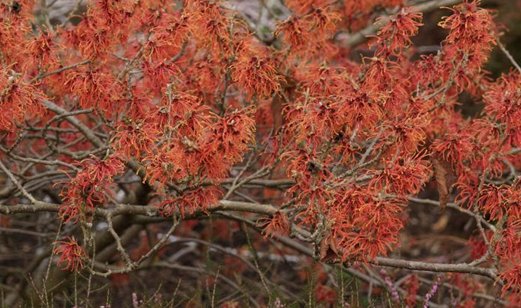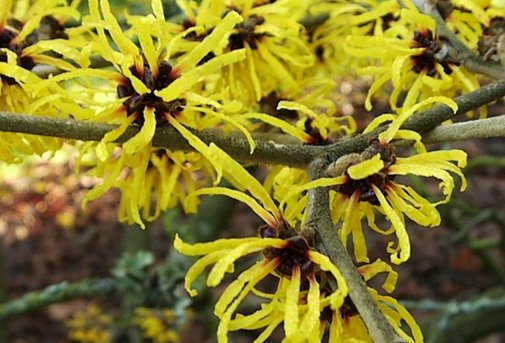Categories
Calendars
Guides
Reviews
Archive
Gallery
Articles
Ask Our Gardening Expert
Wych Hazel
The leaves are similar to the normal hazel and turn rich yellow and red in autumn. It is a suitable plant for woodland gardens and provides a display at a time of year when there may be little else. Twigs cut in winter will flower if brought indoors and are therefore, a good subject for winter flower arrangements.
Hamamelis intermedia “Jelena”
An astringent of the same name is extracted from the bark and leaves and is used in skin lotions for treating insect bites and acne. Witch Hazel helps to shrink enlarged blood vessels.
Chinese Witch Hazel (Hamamelis mollis)
Witch Hazel Care
Grow plants in full sun or partial shade in a well drained acidic soil to which has been added. Prune after flowering, in spring and protect the roots from summer heat with a mulch.
Propagation
Heel cuttings and grafting varieties.
Witch Hazels are deciduous shrubs and sometimes small trees growing to 2.5 m. They are of interest during two seasons. In late winter and early spring, before the leaves appear, their angular branches bear narrow-petalled yellow or orange-red fragrant flowers 2-4cm across. 
Witch Hazel is a native of North America and Asia. Hamamelis virginiana is known as “common” witch hazel and Hamamelis vernalis, in the southern part of its range, blooms earlier in spring. Other varieties are Hamamelis japonica and Hamamelis mollis, Japanese and Chinese witch hazel respectively.
WITCH HAZEL AT A GLANCE
Latin name
Hamamelis sp.
Type
Deciduous shrub
Witch Hazel Care
Plant in well drained acidic soil in sun or partial shade.
Propagation
Grafting and heel cuttings.